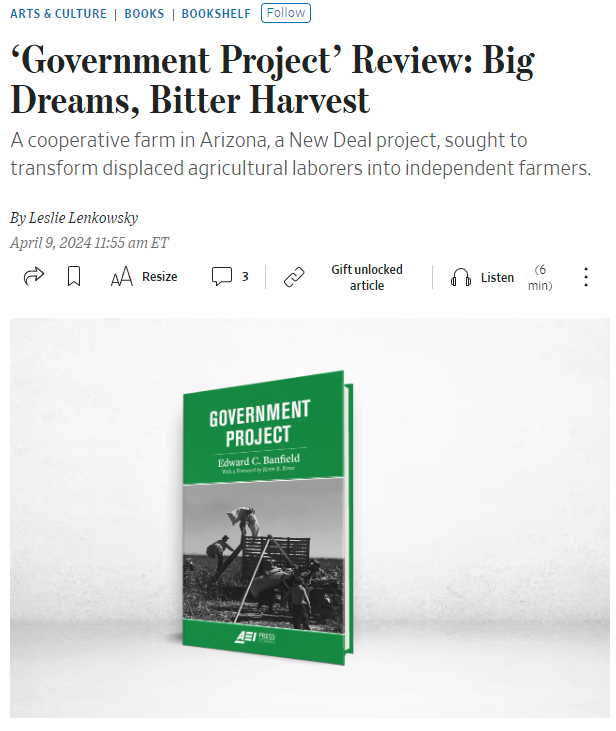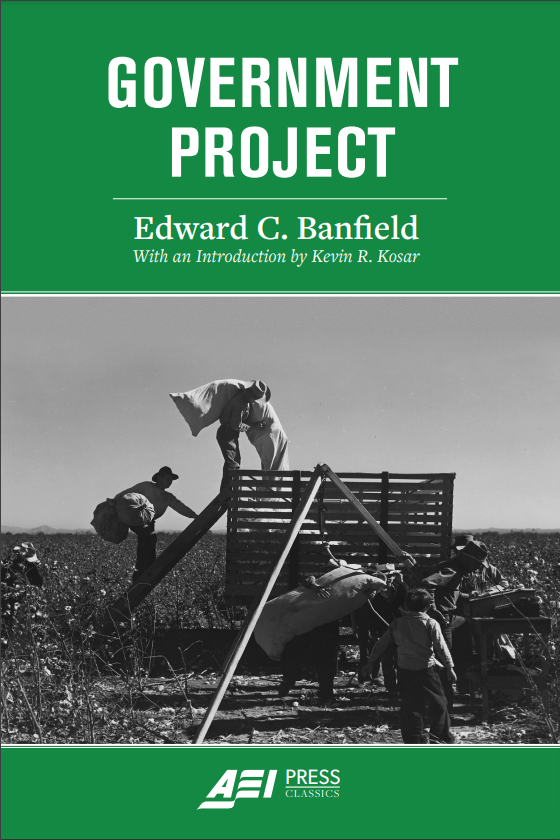AEI Press republished Edward C. Banfield’s classic book, Government Project, in late December 2023. Copies of the book may be purchased at https://amzn.to/48S4nV2. The new edition retains Banfield’s original text, Rexford Tugwell’s original introduction, and a new preface by Kevin R. Kosar. Government Project tells the story of an attempt by the US government to remake the lives of some of its citizens by establishing a cooperative farm in Pinal County, Arizona, in 1937. These individuals were among the most desperately poor and disadvantaged in the nation. The farm was financially succeeded for a time, but in the farm’s seventh year of operation, the inhabitants shuttered it. Many of them walked away with hardly anything, to the shock and dismay of the government officials overseeing it. Government Project deftly explains what went wrong at Casa Grande. In telling this story, Banfield illuminates larger truths about human nature and the limits of governance.
Reviews and Coverage
Amity Shlaes, “Casa Utopia: The Tale of an American Collective Farm,” National Review, January 10, 2024.
American Enterprise Institute event, “Good Intentions Are Not Enough: Revisiting Edward C. Banfield’s Government Project,” January 20, 2024.
Kevin R. Kosar interviewed about Government Project on Jonah Goldberg’s The Remnant podcast, February 8, 2024.
Mark Pulliam, “Government Project: The Eternal Folly of Central Planning,” American Institute for Economic Research, April 1, 2024.
Dominic Pino, “Kevin Kosar Revives Edward Banfield,” National Review, April 9, 2024. A video of this dicussion apppears here.
Les Lenkowsky, “‘Government Project’ Review: Big Dreams, Bitter Harvest,” Wall Street Journal, April 10, 2024.
Kevin R. Kosar, “Old Lessons for the New Right,” The Dispatch, April 10, 2024.
Vance Ginn, Why Don’t Government Projects Work with Dr. Kevin Kosar, Let People Prosper podcast, April 15, 2024.
Howard Husock, “The New Deal’s Failed Kibbutz in the Desert,” AEI Ideas, April 19, 2024.
Mark Pulliam, “Remembering Edward C. Banfield,” Chronicles, May 1, 2024.










